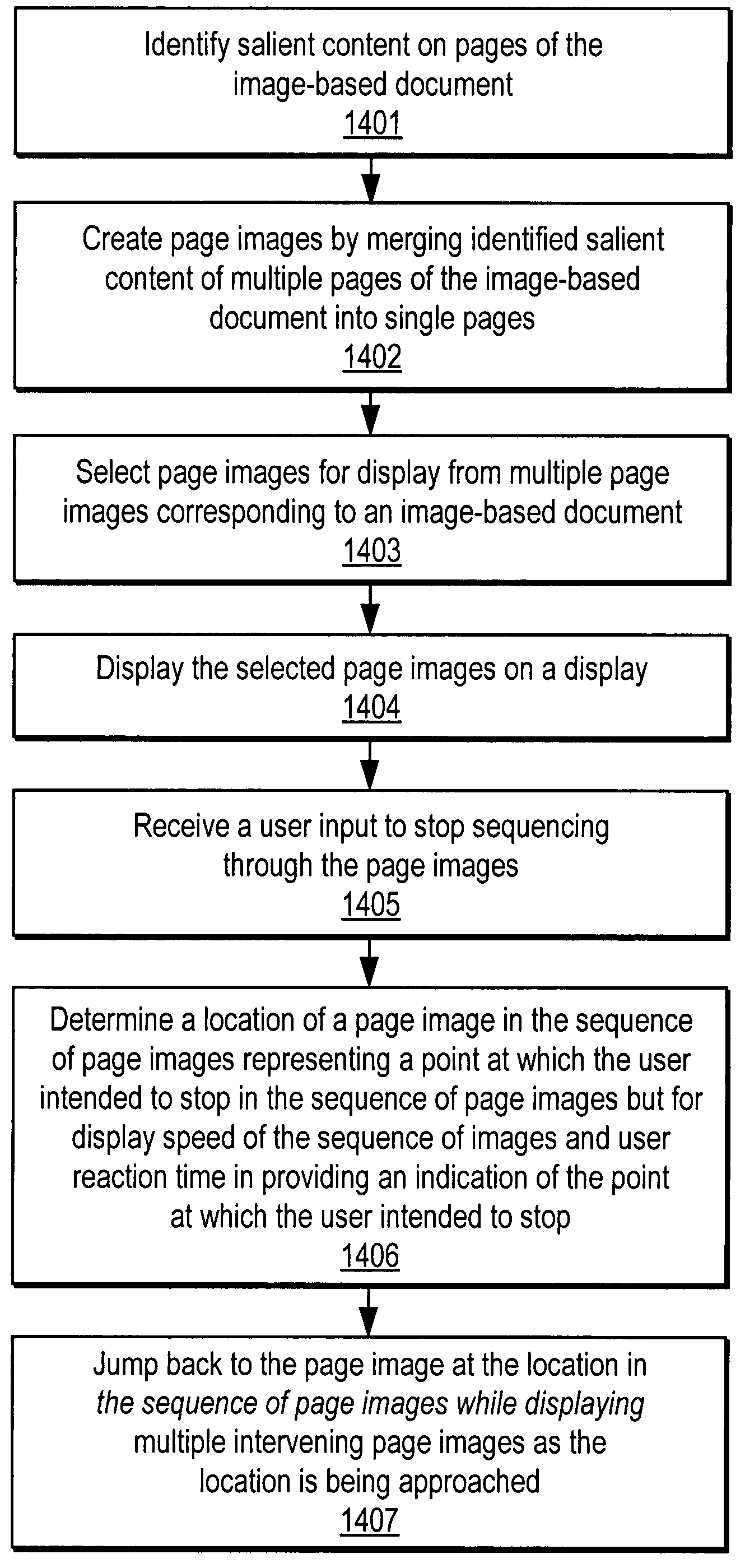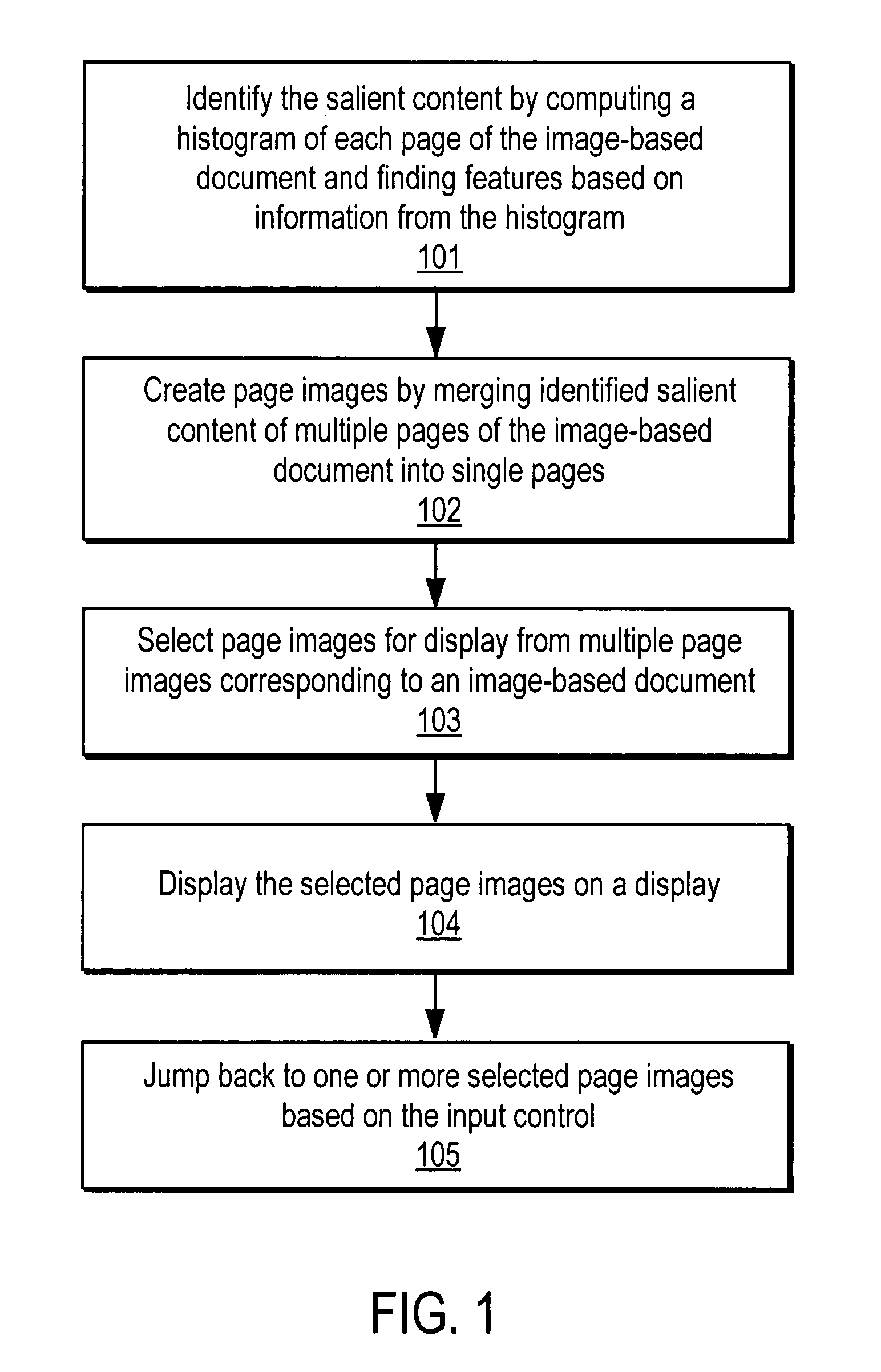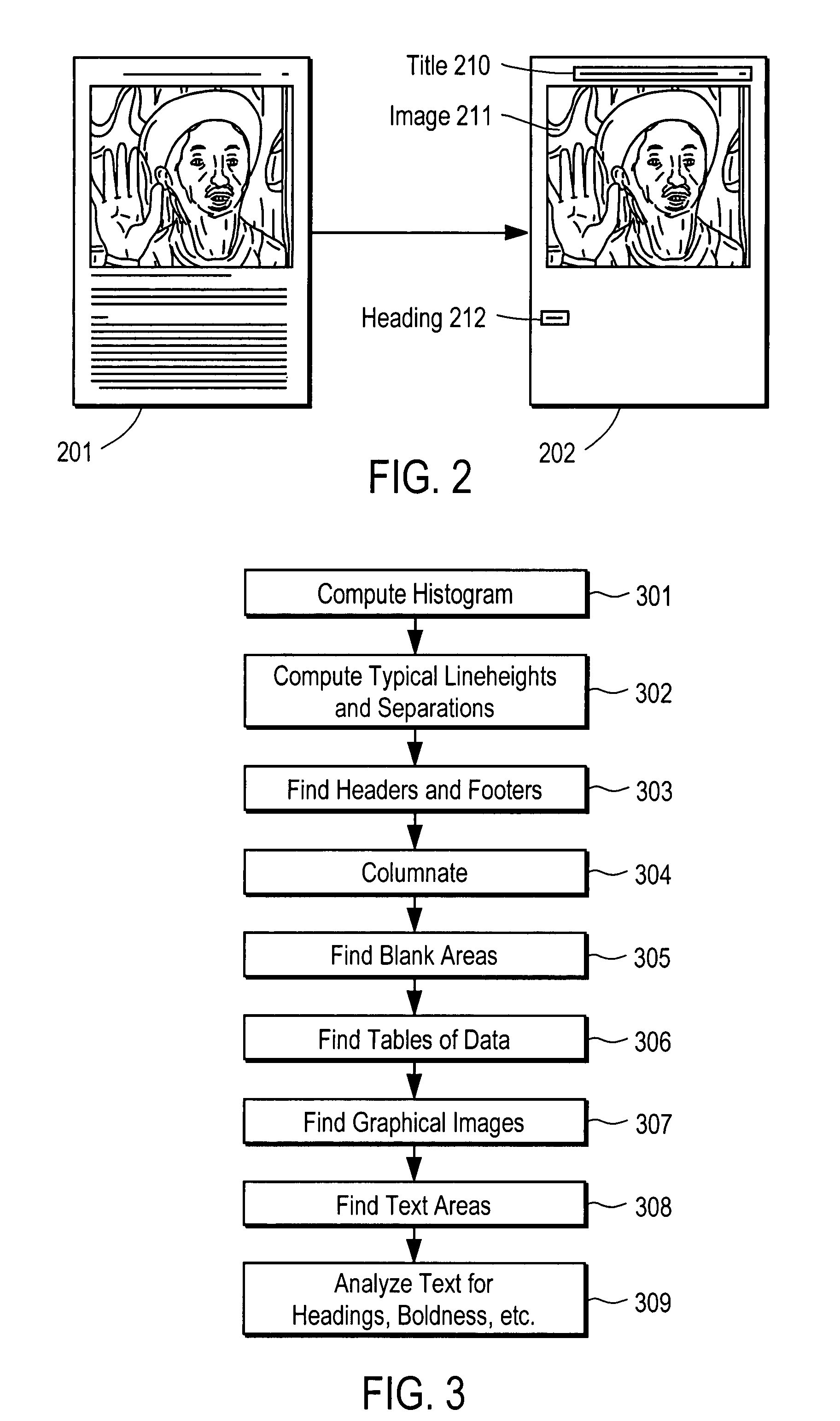Avoiding disorientation under discontinuous navigation in an image flipping system
a discontinuous navigation and image technology, applied in the field of display images and image processing, can solve the problems of poor document scale, easy to miss important pages, and current electronic systems are vastly inferior to the physical process, so as to avoid disorientation
- Summary
- Abstract
- Description
- Claims
- Application Information
AI Technical Summary
Benefits of technology
Problems solved by technology
Method used
Image
Examples
example functionality
[0105]In one embodiment, the system includes additional functionality. This may include chapter tinting or thumb indexing, ephemeral animations, and ephemeral separation pages.
[0106]In one embodiment, to discern different sections of text, like chapters, the system enhances the document's own images by providing visual clues to chapter boundaries. For example, the system might perform chapter tinting by adding different pastel backgrounds to the images of the pages of each chapter. Also, the system might perform thumb indexing by artificially providing chapter thumb indexes analogous to those that some books provide.
[0107]In one embodiment, the system provides a facility for a user to insert “flip-book” style animations (ephemeral animations) that announce the importance of some page as it is being approached through rapid scanning. The quasi-annotations of which such an animation would consist would not appear on pages when viewed slowly or statically.
[0108]A special-purpose device...
PUM
 Login to View More
Login to View More Abstract
Description
Claims
Application Information
 Login to View More
Login to View More - R&D
- Intellectual Property
- Life Sciences
- Materials
- Tech Scout
- Unparalleled Data Quality
- Higher Quality Content
- 60% Fewer Hallucinations
Browse by: Latest US Patents, China's latest patents, Technical Efficacy Thesaurus, Application Domain, Technology Topic, Popular Technical Reports.
© 2025 PatSnap. All rights reserved.Legal|Privacy policy|Modern Slavery Act Transparency Statement|Sitemap|About US| Contact US: help@patsnap.com



